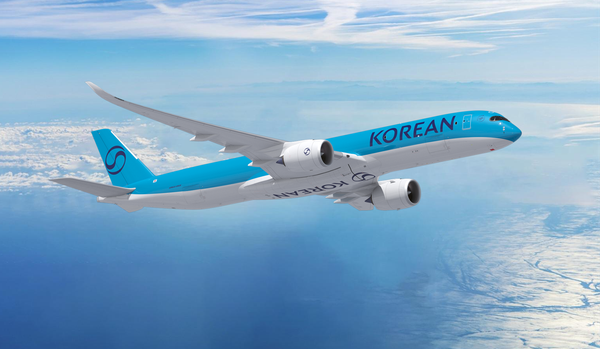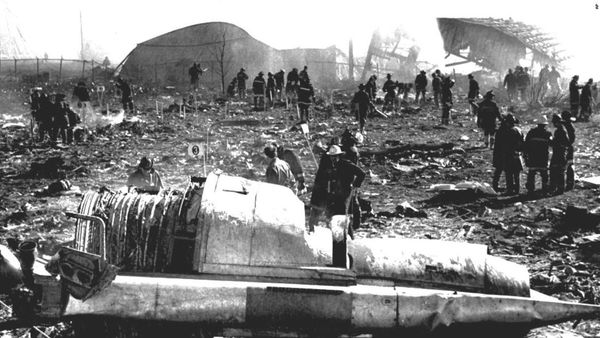Seattle-Tacoma International Airport saw a concerning incident on Wednesday morning when a Japan Airlines (JAL) plane clipped a parked Delta Air Lines jet while taxiing. Thankfully, no one was injured, but passengers described the collision as a frightening experience.
The accident occurred around 10:15 a.m. when JAL Flight 68, a Boeing 787-9 Dreamliner arriving from Tokyo, was taxiing after landing. Its right wingtip struck the tail of a Delta Boeing 737, waiting in line for de-icing before departing for Puerto Vallarta, Mexico. Photos from the scene showed the JAL wing lodged into the tail of the Delta aircraft.
Passengers aboard the Delta flight felt a sudden jolt and heard a loud crunching noise. One traveler, Jackie Patton, said, "The plane shook violently. It was obvious right away that something was wrong." Authorities responded quickly, ensuring all passengers disembarked safely.

Aviation Safety: A Growing Concern
The Federal Aviation Administration (FAA) confirmed that the collision happened outside air traffic control jurisdiction. An investigation is underway to determine how the two planes came into contact. Both airlines apologized for the disruption, and Delta arranged for another aircraft to transport its affected passengers.
While this incident did not cause injuries, it comes when aviation safety is under scrutiny following recent air disasters. Just last week, an American Airlines jet collided midair with a U.S. Army helicopter near Washington, D.C., resulting in 67 fatalities.
Additionally, a medical transport plane crashed in Philadelphia, killing six people onboard and one person on the ground.

These events highlight the importance of strict safety measures on the ground and in the air. Though aviation remains one of the safest modes of transport, incidents like these remind the industry of the constant need for vigilance.
At Seattle-Tacoma Airport, operations were only briefly affected, but passengers were left shaken. "It was very scary," Patton added. "I never expected two planes to get so close."
The FAA and airport authorities are now reviewing procedures to prevent such incidents in the future. As investigations continue, experts emphasize that ground safety is as critical as in-flight security, ensuring that even minor mishaps do not escalate into major accidents.
Cliffs, Clouds, and Courage: Lukla Airport Nepal, The World's Most Dangerous Airport » 3,200 People Just Ordered This $300,000 Flying Car » Lufthansa Flight Diverts after Passenger Stabs Teens with Fork »
Comments (0)
Add Your Comment
SHARE
TAGS
NEWS seattle plane crash 2025 japan airlines seattle seattle airport plane crash delta and japan airlines collide seatac seatac airport planes collideRECENTLY PUBLISHED
 Fuel, Faith, and Four Engines: How Emirates Makes the A380 Work
The world's largest passenger airplane — the Airbus A380 Superjumbo — was initially developed to revolutionize intercontinental travel by transporting high volumes of passengers over long distances. However, 20 years later, the A380 has not been the financial success that Airbus hoped it would be.
INFORMATIONAL
READ MORE »
Fuel, Faith, and Four Engines: How Emirates Makes the A380 Work
The world's largest passenger airplane — the Airbus A380 Superjumbo — was initially developed to revolutionize intercontinental travel by transporting high volumes of passengers over long distances. However, 20 years later, the A380 has not been the financial success that Airbus hoped it would be.
INFORMATIONAL
READ MORE »
 Korean Air Orders A350F Freighter
Korean Air has made a strategic decision to convert seven A350-1000 passenger aircraft orders into A350F freighter orders, reinforcing its position in the cargo aviation sector. This move reflects the airline's commitment to enhance operational efficiency and sustainability in response to growing cargo demands.
NEWS
READ MORE »
Korean Air Orders A350F Freighter
Korean Air has made a strategic decision to convert seven A350-1000 passenger aircraft orders into A350F freighter orders, reinforcing its position in the cargo aviation sector. This move reflects the airline's commitment to enhance operational efficiency and sustainability in response to growing cargo demands.
NEWS
READ MORE »
 Ghosts of 191: The Crash Site that Continues to Haunt Chicago to this Day
On May 25, 1979, American Airlines Flight 191 was scheduled to fly nonstop from Chicago’s O’Hare International Airport to Los Angeles. Operated by a McDonnell Douglas DC-10, the flight unfortunately met its untimely demise before it could even put some distance between itself and the Windy City. The events of Flight 191 continue to haunt Chicago to this day.
INFORMATIONAL
READ MORE »
Ghosts of 191: The Crash Site that Continues to Haunt Chicago to this Day
On May 25, 1979, American Airlines Flight 191 was scheduled to fly nonstop from Chicago’s O’Hare International Airport to Los Angeles. Operated by a McDonnell Douglas DC-10, the flight unfortunately met its untimely demise before it could even put some distance between itself and the Windy City. The events of Flight 191 continue to haunt Chicago to this day.
INFORMATIONAL
READ MORE »



